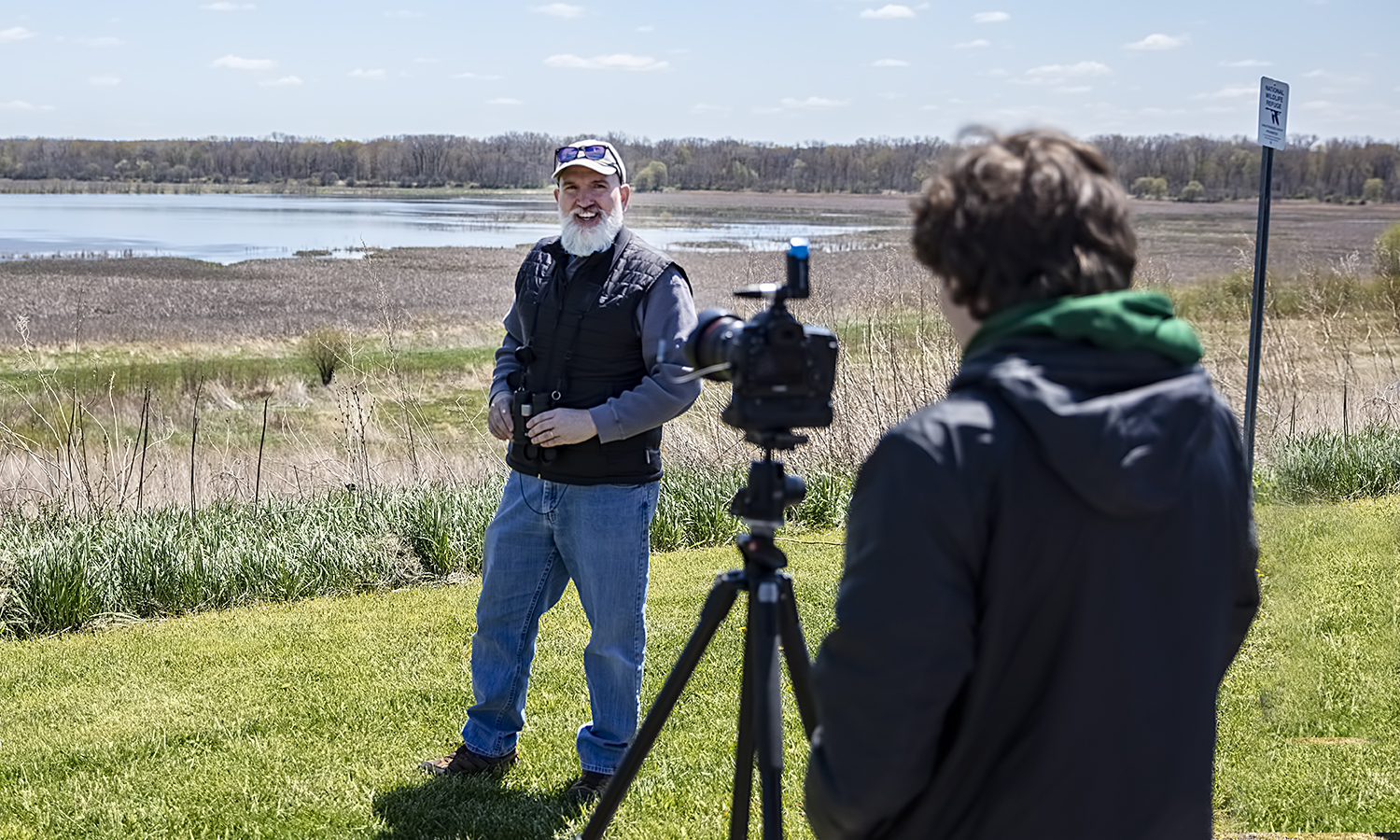
This Week in Photos
This Week in Photos: Birding with Professor Deutschlander
 Adam Farid 20 films Professor of Biology Mark Deutschlander at the main pool of the Montezuma National Wildlife Refuge in nearby Seneca Falls, N.Y. The videos are part of Deutschlander's remote-learning Maymester class, Birds in Our Landscape. The course helps students to identify birds and understand spatial and temporal patterns among bird populations and their relation to environmental change.
Adam Farid 20 films Professor of Biology Mark Deutschlander at the main pool of the Montezuma National Wildlife Refuge in nearby Seneca Falls, N.Y. The videos are part of Deutschlander's remote-learning Maymester class, Birds in Our Landscape. The course helps students to identify birds and understand spatial and temporal patterns among bird populations and their relation to environmental change.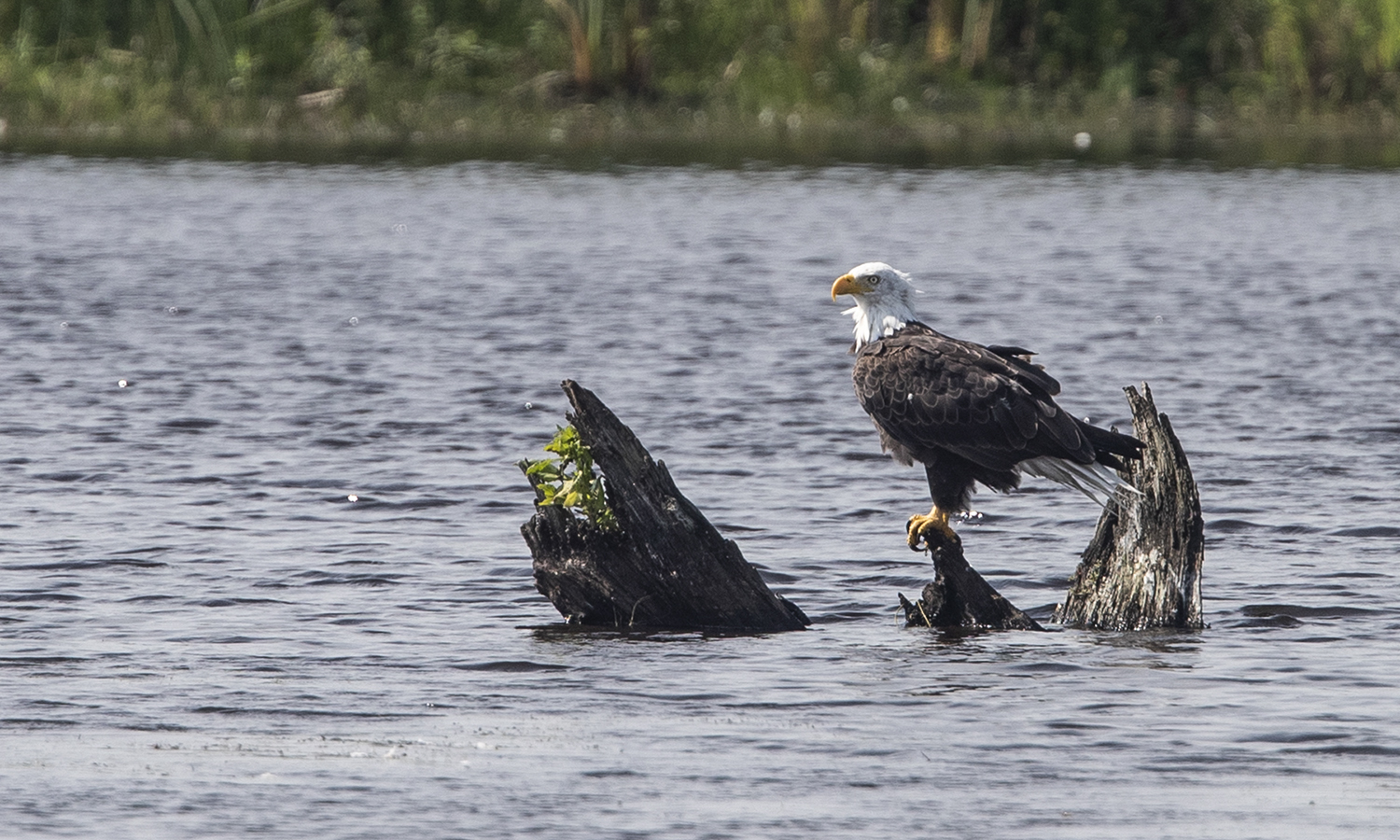 In the main pool at the refuge, a mature Bald Eagle waits on a stump for the first sign of an easy catch for lunch. Eagles feed mainly on fish, but will also consume smaller birds and ducks. The bird photography used in this TWIP was provided by HWS Chief Photographer Kevin Colton from his lifelong collection of avian photography. Colton also accompanied Deutschlander and Farid to the refuge to take photos for the Maymester class.
In the main pool at the refuge, a mature Bald Eagle waits on a stump for the first sign of an easy catch for lunch. Eagles feed mainly on fish, but will also consume smaller birds and ducks. The bird photography used in this TWIP was provided by HWS Chief Photographer Kevin Colton from his lifelong collection of avian photography. Colton also accompanied Deutschlander and Farid to the refuge to take photos for the Maymester class.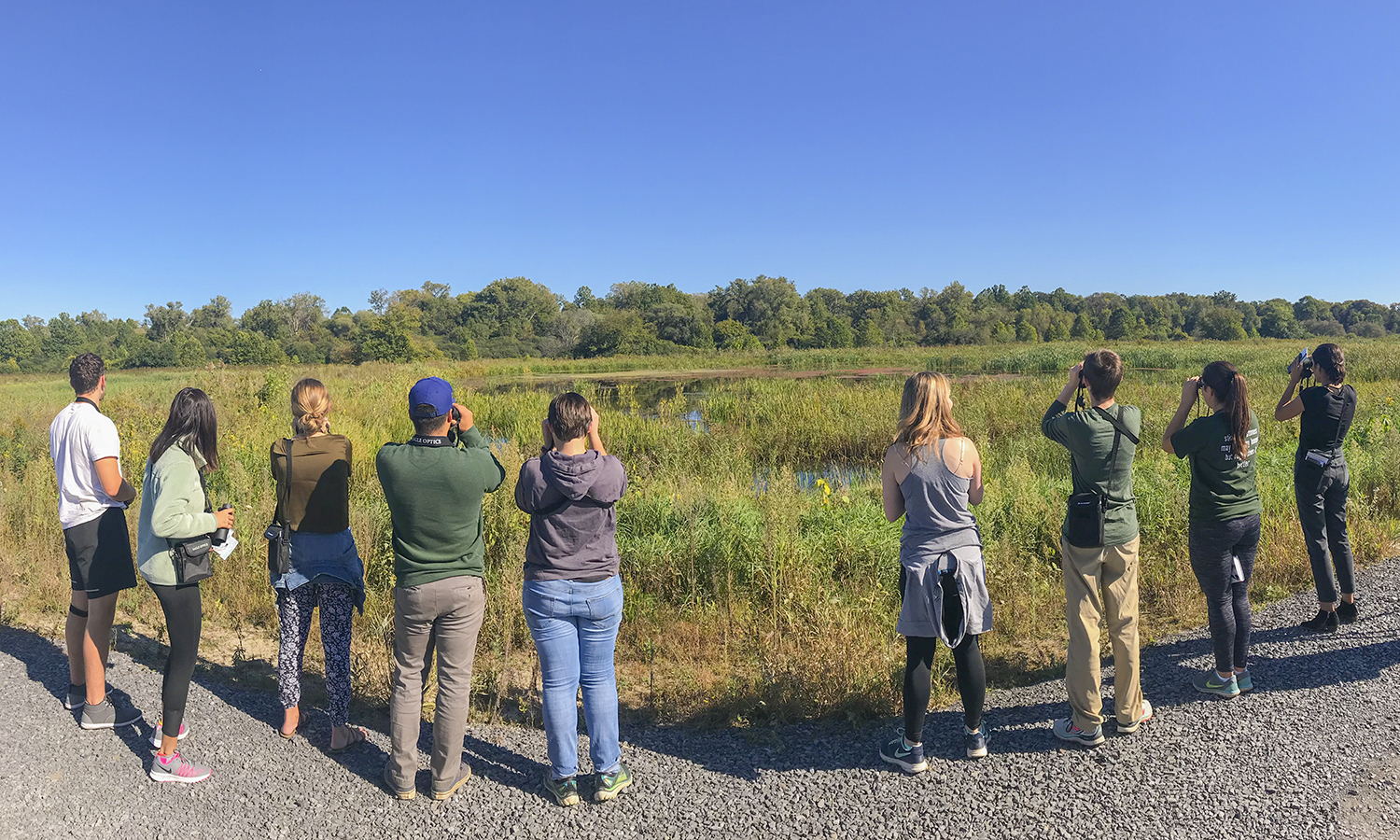 In addition to the Maymester course, Deutschlander teaches a course for biology majors about ornithology and an FSEM called Bird Obsessions about birds and bird-human interactions. Seen here are students in the ornithology class visiting Montezuma last year.
In addition to the Maymester course, Deutschlander teaches a course for biology majors about ornithology and an FSEM called Bird Obsessions about birds and bird-human interactions. Seen here are students in the ornithology class visiting Montezuma last year.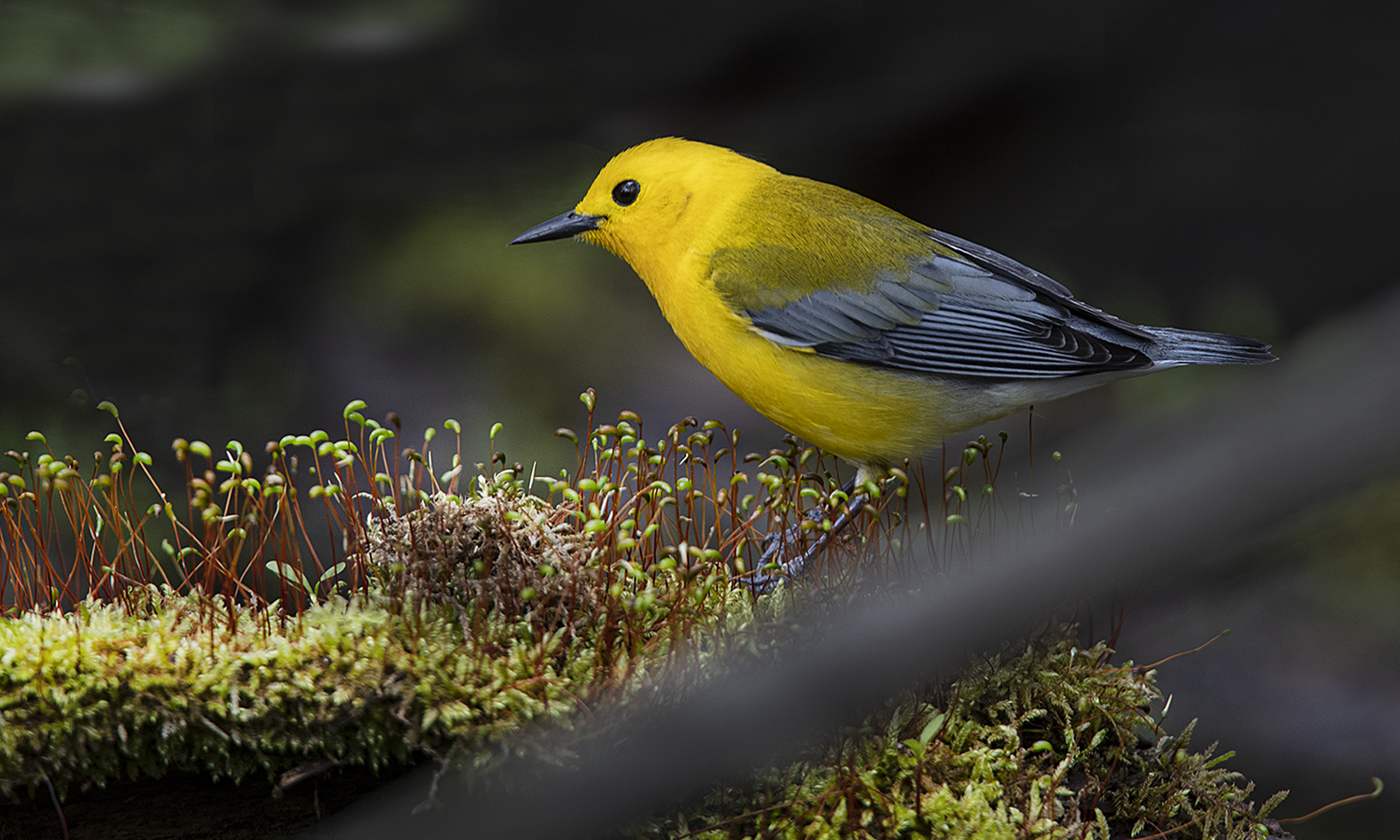 A Prothonotary Warbler is spotted along the northeastern edge of the refuge. This species draws a lot of attention, as its rarely observed in Upstate New York. During this years Maymester course, students are learning about birds in their backyards and making regional connections between landscapes, habitats and bird species by visiting birding hotspots they learn about through the online database eBird.
A Prothonotary Warbler is spotted along the northeastern edge of the refuge. This species draws a lot of attention, as its rarely observed in Upstate New York. During this years Maymester course, students are learning about birds in their backyards and making regional connections between landscapes, habitats and bird species by visiting birding hotspots they learn about through the online database eBird.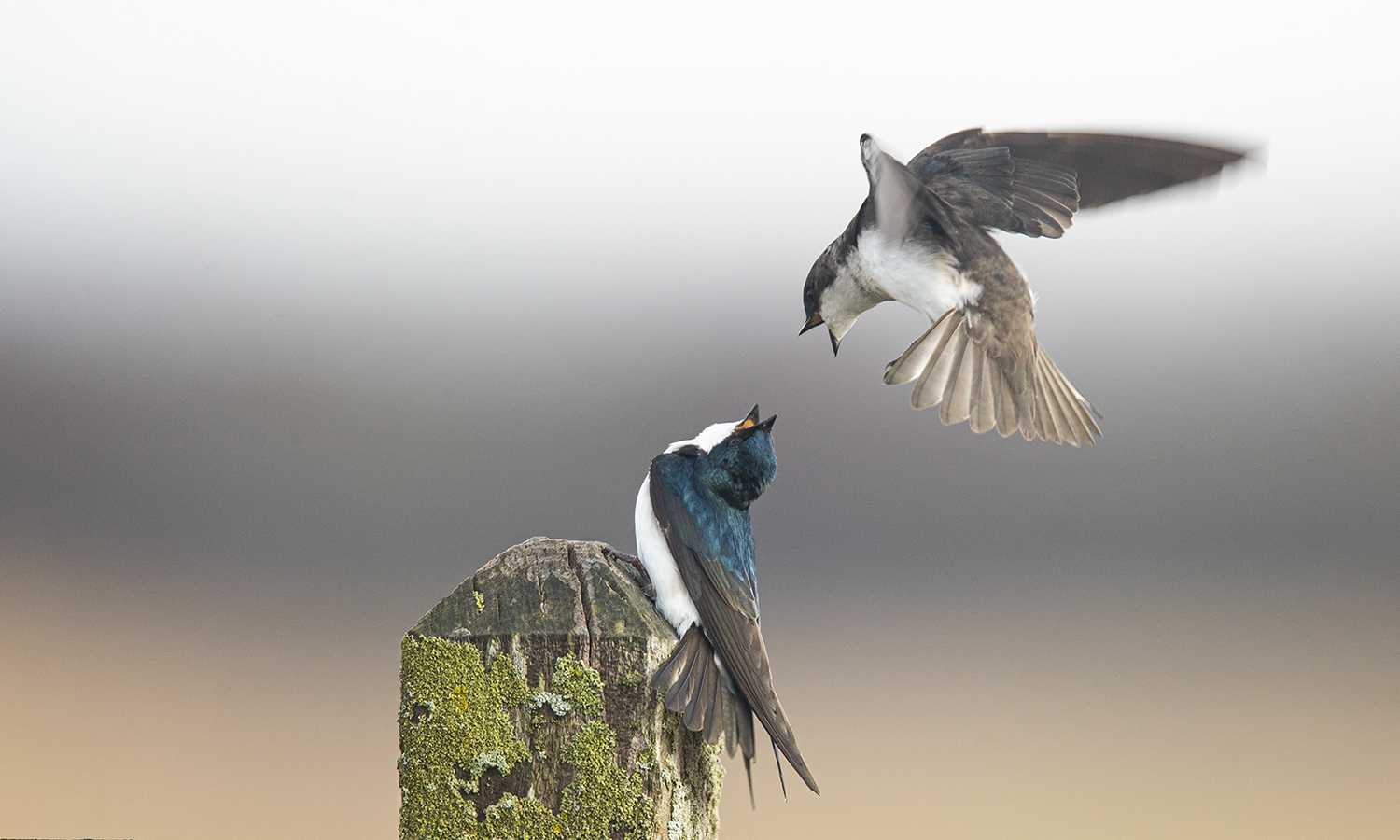 Tree Swallows begin the mating season with chattering calls and the fluttering of wings. In Deutschlanders Maymester course, students use resources from the Cornell Laboratory of Ornithology, made available in response to COVID-19.
Tree Swallows begin the mating season with chattering calls and the fluttering of wings. In Deutschlanders Maymester course, students use resources from the Cornell Laboratory of Ornithology, made available in response to COVID-19.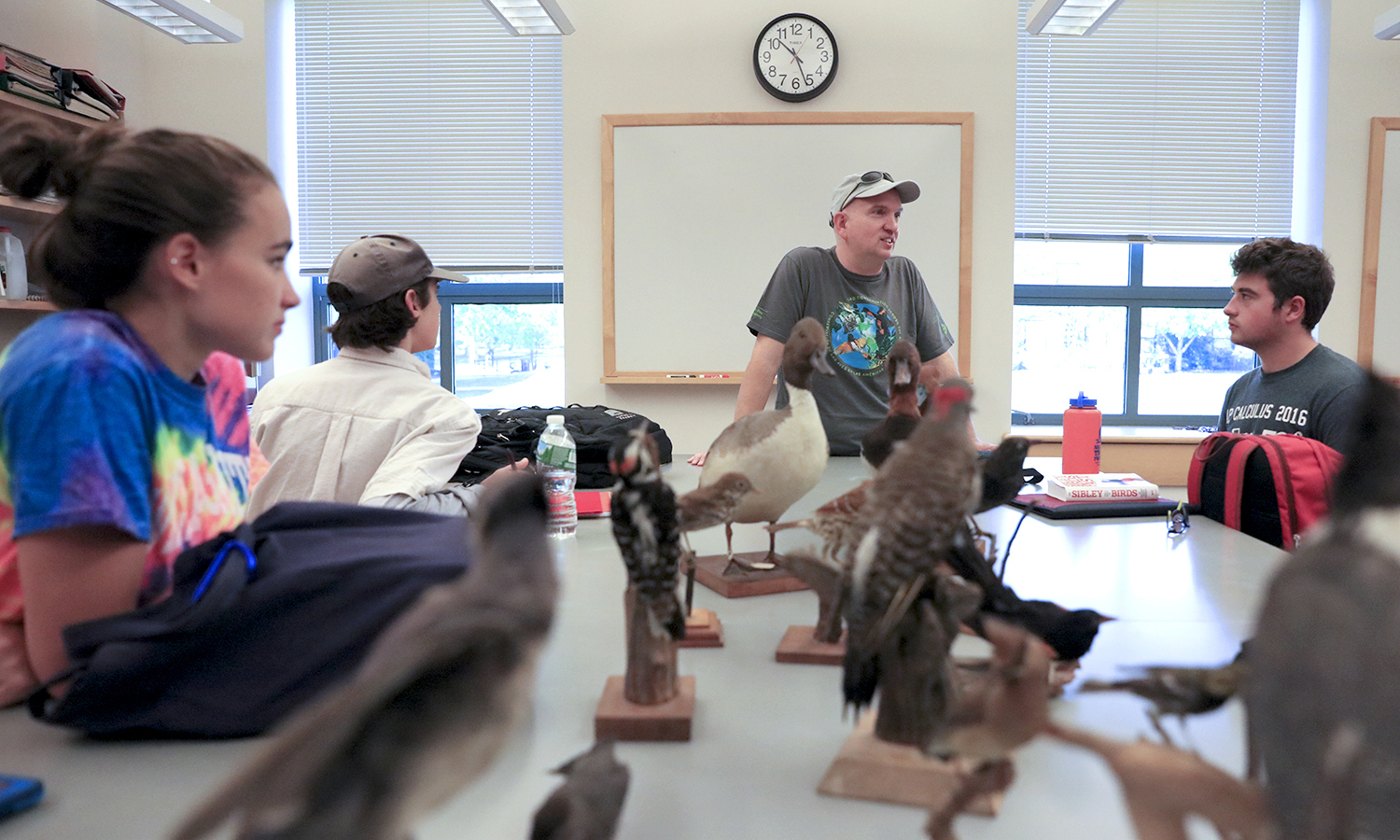 Professor of Biology Mark Deutschlander lectures during Bird Obsessions. His courses are a popular favorite among students.
Professor of Biology Mark Deutschlander lectures during Bird Obsessions. His courses are a popular favorite among students.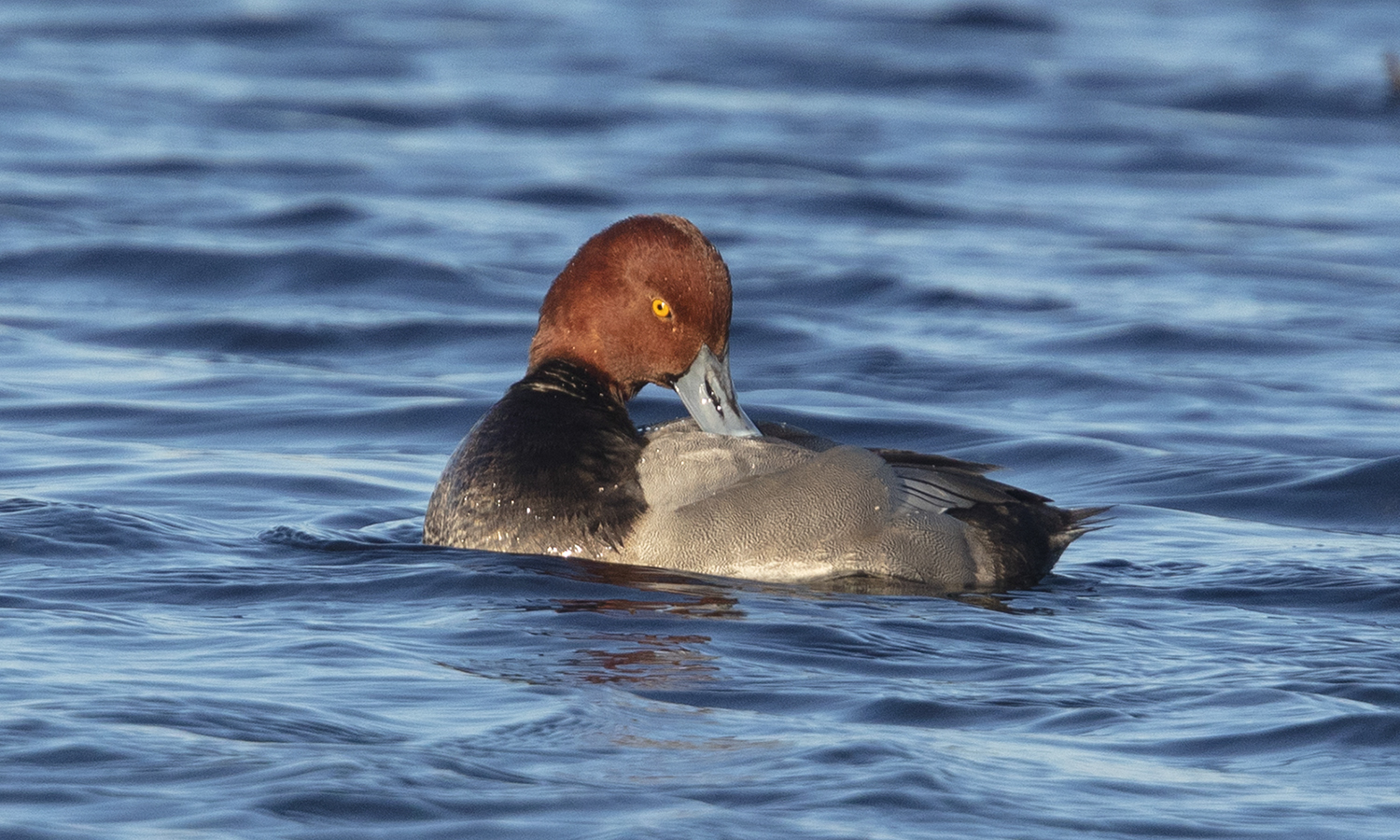 A male Redhead preens his back feathers on a calm afternoon. The preen gland produces an oil that makes a duck's feathers waterproof. Students study feather structure to learn about how they function in flight, insulation, camouflage and mating.
A male Redhead preens his back feathers on a calm afternoon. The preen gland produces an oil that makes a duck's feathers waterproof. Students study feather structure to learn about how they function in flight, insulation, camouflage and mating.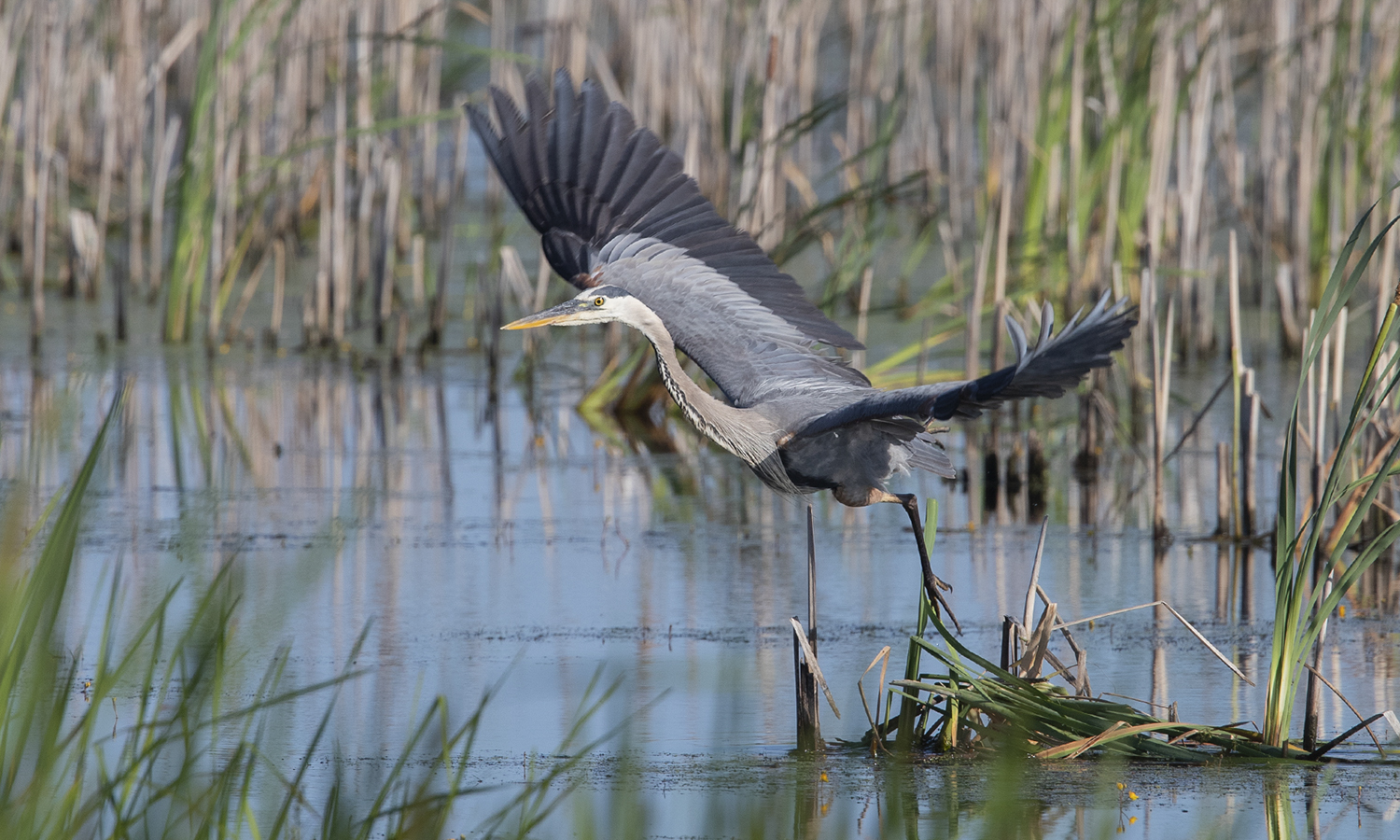 Montezuma is home to several species of wading and water birds, including the Great Blue Heron, seen here taking flight from the marsh. This species, the William Smith mascot, is abundant at the refuge and nests in treetops in large communal colonies.
Montezuma is home to several species of wading and water birds, including the Great Blue Heron, seen here taking flight from the marsh. This species, the William Smith mascot, is abundant at the refuge and nests in treetops in large communal colonies.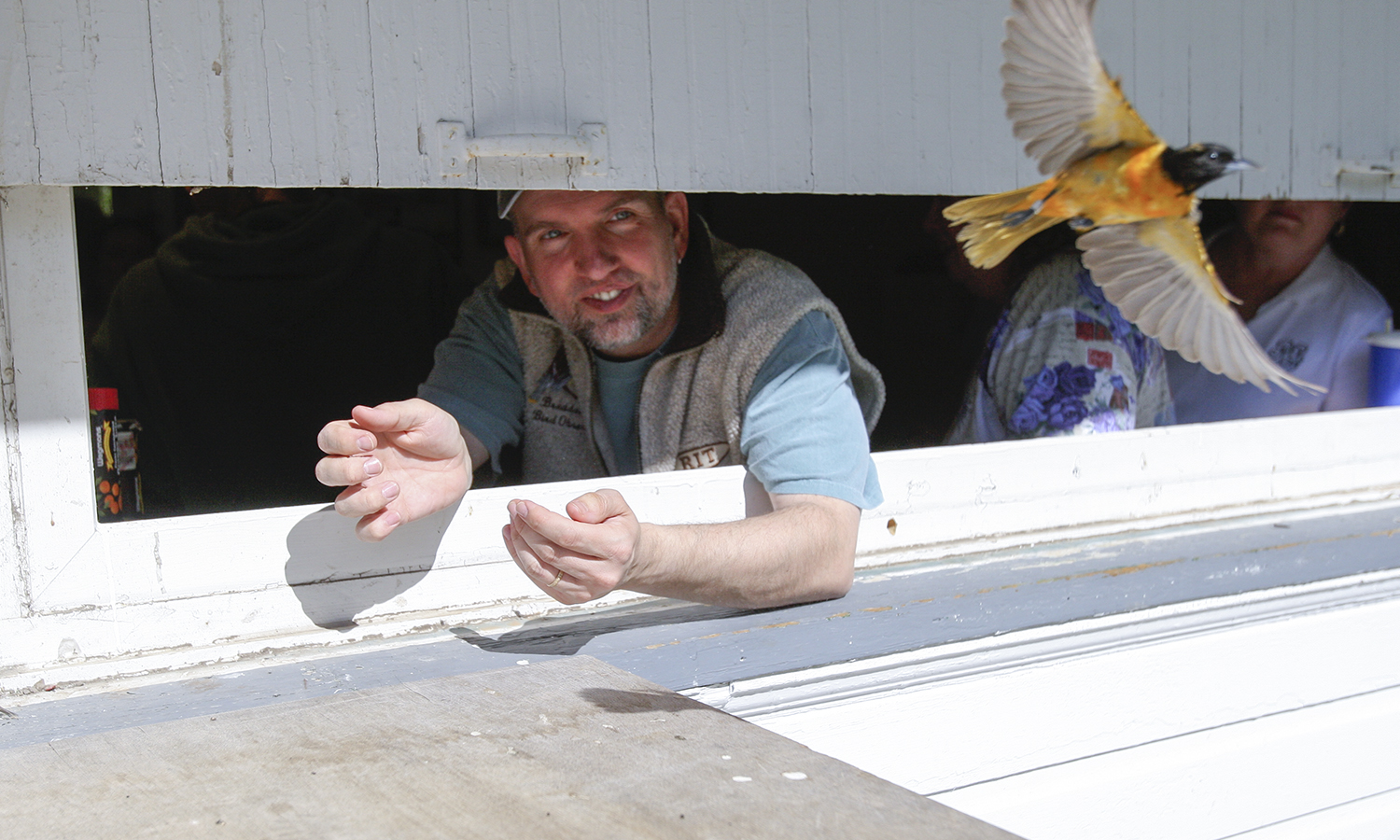 Deutschlander releases a newly banded male Baltimore Oriole at the Braddock Bay Bird Observatory on Lake Ontario. Students often accompany Deutschlander to Braddock Bay to learn about bird banding and migration, and some have conducted honors research there.
Deutschlander releases a newly banded male Baltimore Oriole at the Braddock Bay Bird Observatory on Lake Ontario. Students often accompany Deutschlander to Braddock Bay to learn about bird banding and migration, and some have conducted honors research there.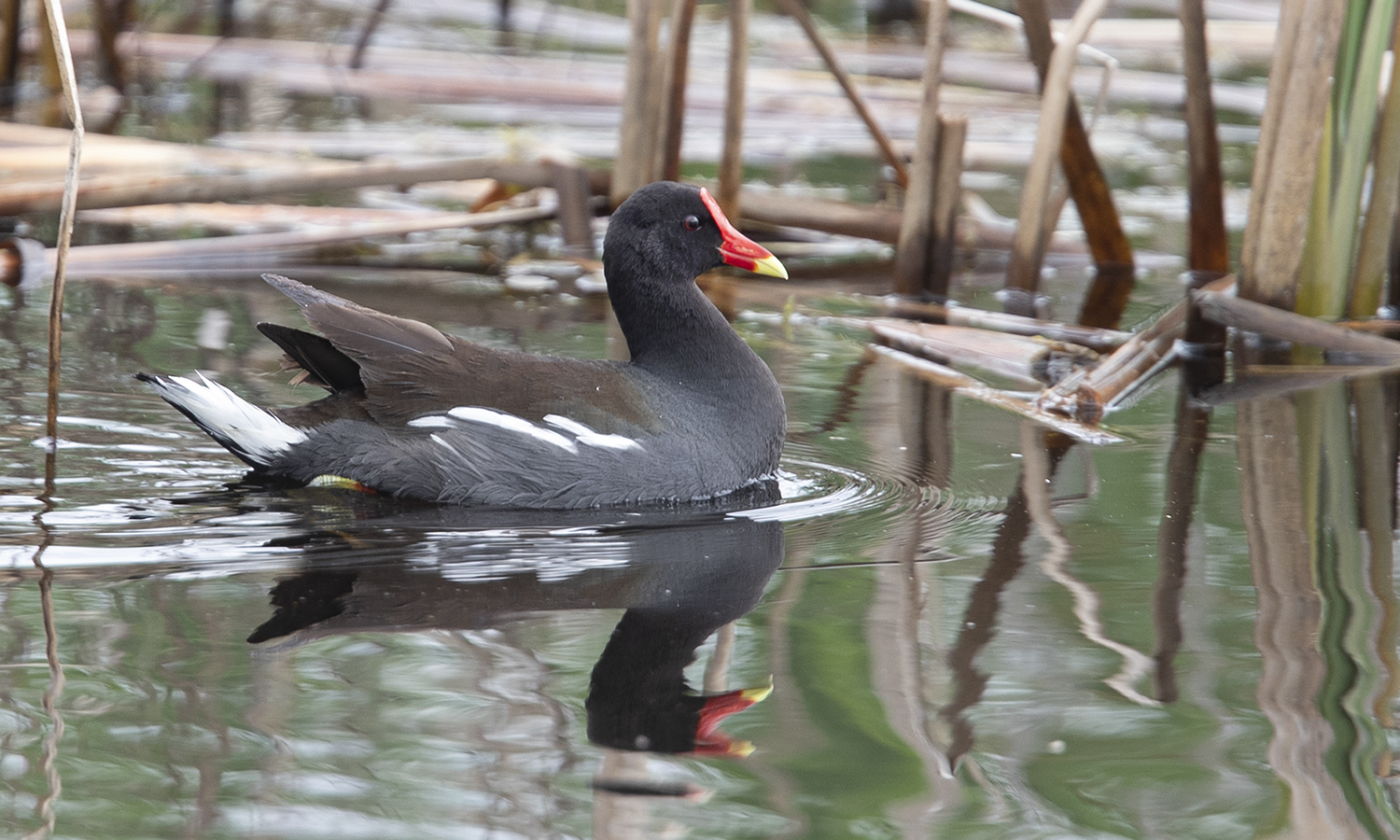 A Common Gallinule works its way through the cattails along the main wildlife drive at Montezuma. Deutschlanders students learn to identify birds by observing differences in size, shape, color, vocalizations and behavior, as well as habitat and time of year.
A Common Gallinule works its way through the cattails along the main wildlife drive at Montezuma. Deutschlanders students learn to identify birds by observing differences in size, shape, color, vocalizations and behavior, as well as habitat and time of year.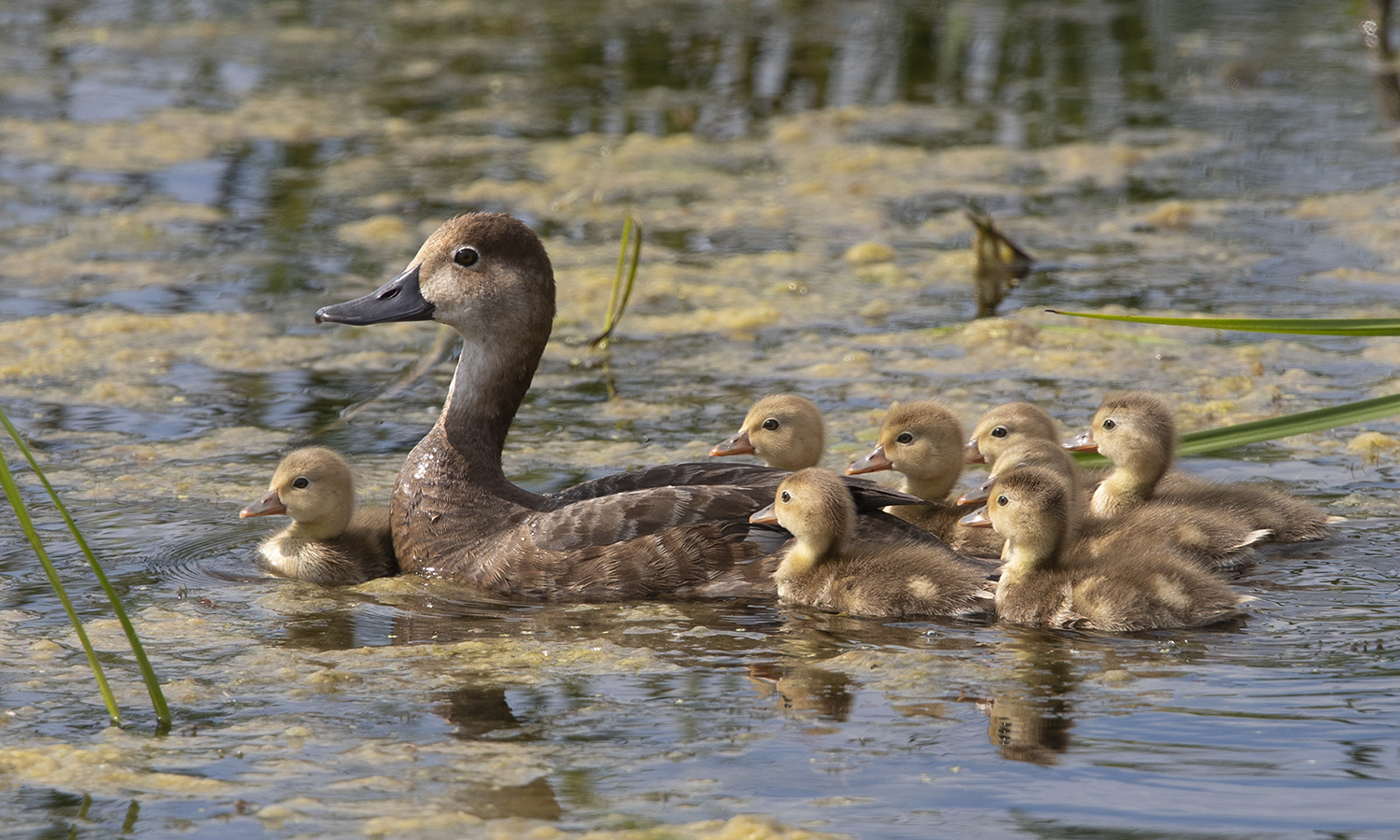 A mother Redhead swims with her ducklings in the marsh. Montezuma is the summer home to many breeding water birds including rails, soras, shorebirds, grebes, ducks and geese.
A mother Redhead swims with her ducklings in the marsh. Montezuma is the summer home to many breeding water birds including rails, soras, shorebirds, grebes, ducks and geese.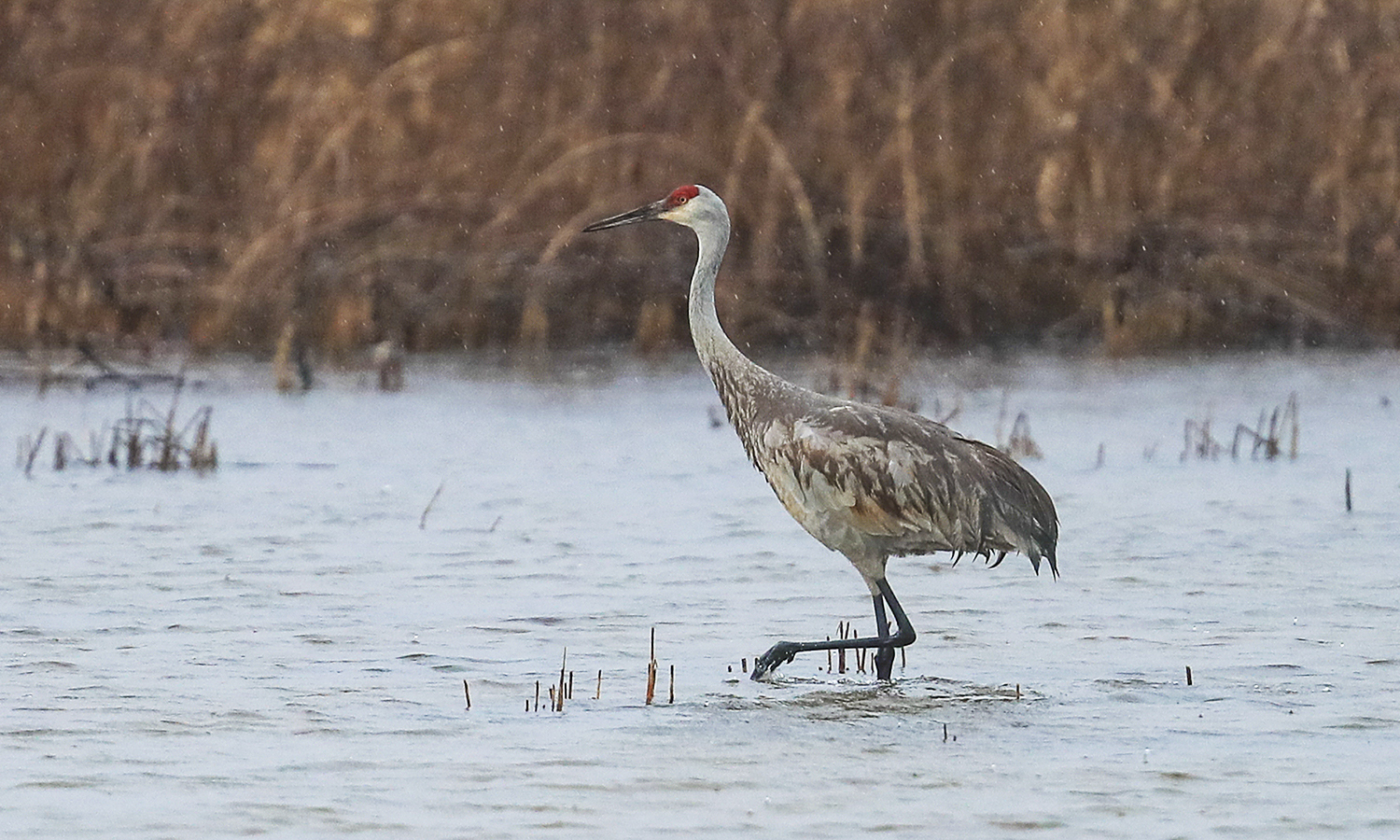 Only in recent years have Sandhill Cranes, like the one shown here, started nesting in the area. Hard to miss, these birds can grow to be 4-feet tall and have a wingspan up to 7.5 feet.
Only in recent years have Sandhill Cranes, like the one shown here, started nesting in the area. Hard to miss, these birds can grow to be 4-feet tall and have a wingspan up to 7.5 feet.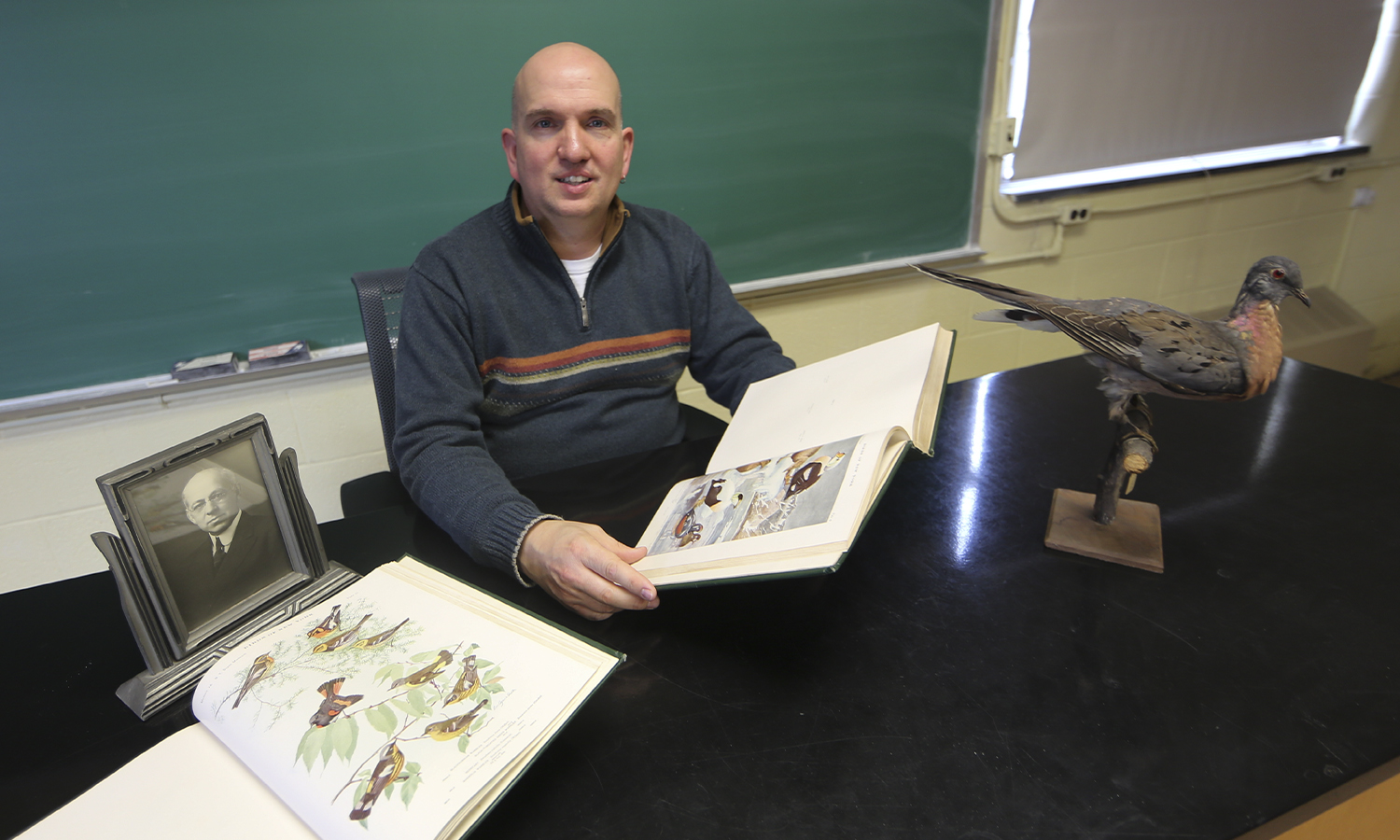 On campus, Deutschlander examines some of the contents of the bird collection at Eaton Hall, which includes 300 birds from renowned ornithologist Elon Howard Eaton P'37, Professor of Biology Theodore Odell from the Class of 1920 and William Smith.
On campus, Deutschlander examines some of the contents of the bird collection at Eaton Hall, which includes 300 birds from renowned ornithologist Elon Howard Eaton P'37, Professor of Biology Theodore Odell from the Class of 1920 and William Smith.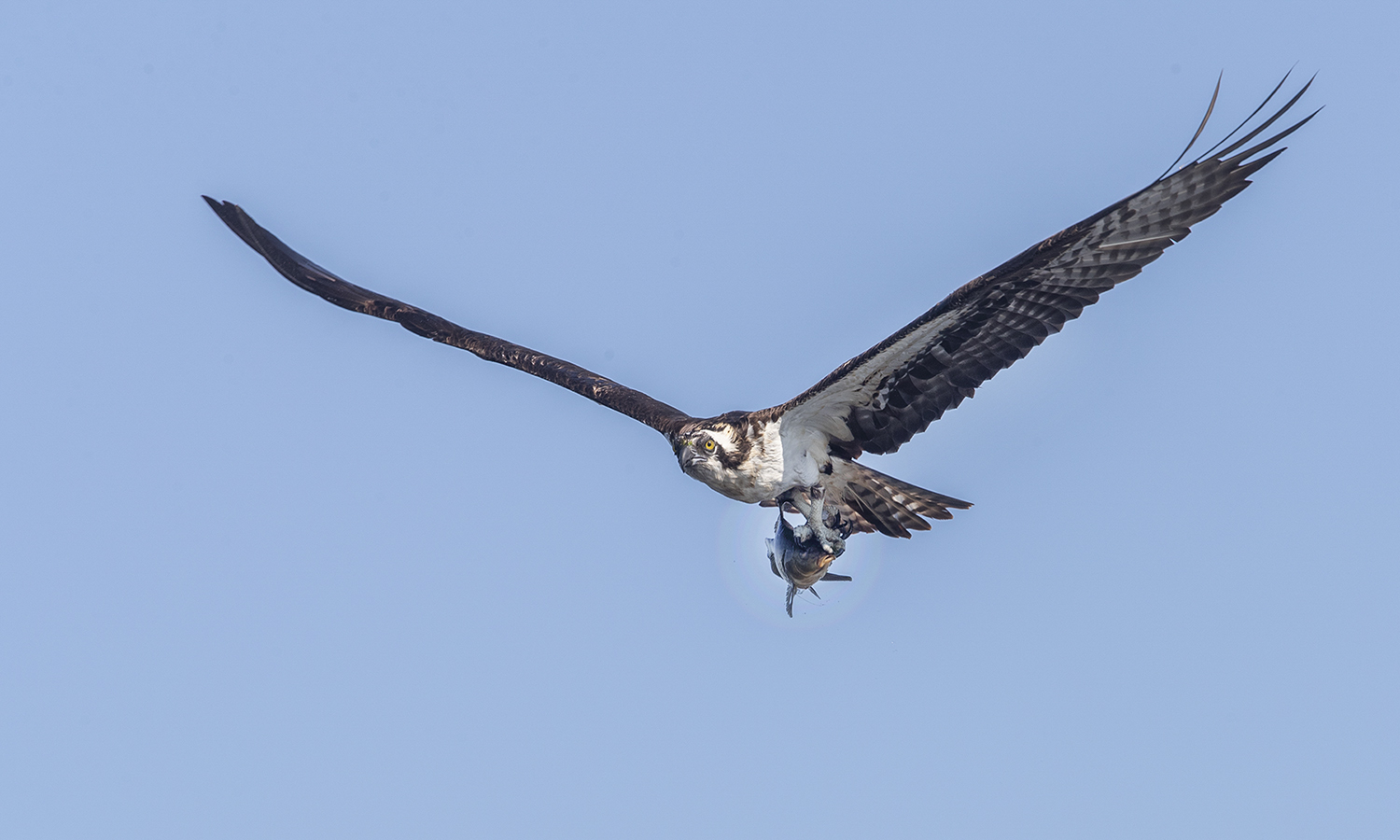 An Osprey heads back to its nest site with a meal of fish. Ospreys build nests along the electric towers in and around the refuge.
An Osprey heads back to its nest site with a meal of fish. Ospreys build nests along the electric towers in and around the refuge.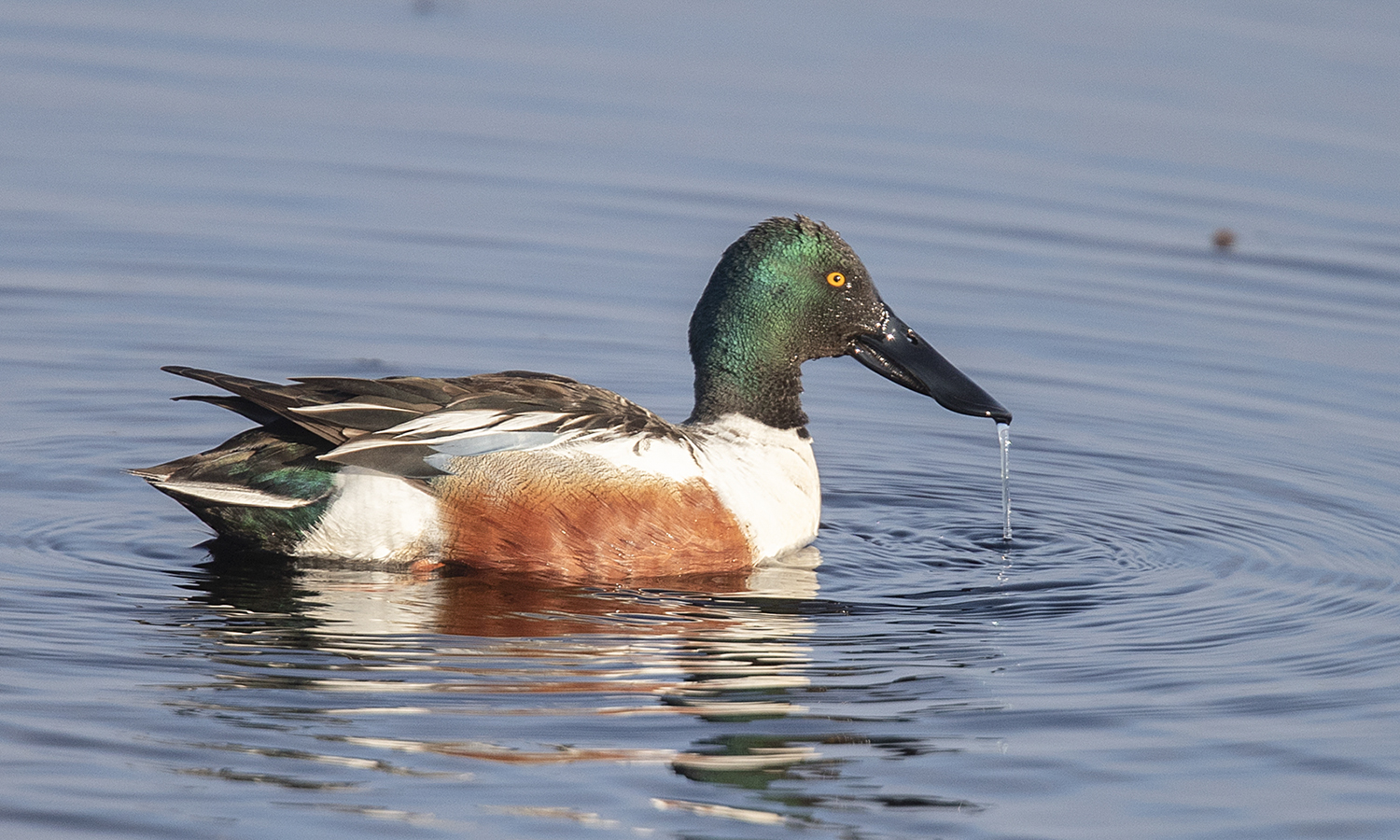 A male or drake Northern Shoveler feeds in the shallow water of the main pool. Its distinctive coloring and unique bill makes this one of the easiest waterfowl to identify. Not all species are easy to identify, especially to new birders. Students use the Merlin app from the Cornell Laboratory of Ornithology to help.
A male or drake Northern Shoveler feeds in the shallow water of the main pool. Its distinctive coloring and unique bill makes this one of the easiest waterfowl to identify. Not all species are easy to identify, especially to new birders. Students use the Merlin app from the Cornell Laboratory of Ornithology to help.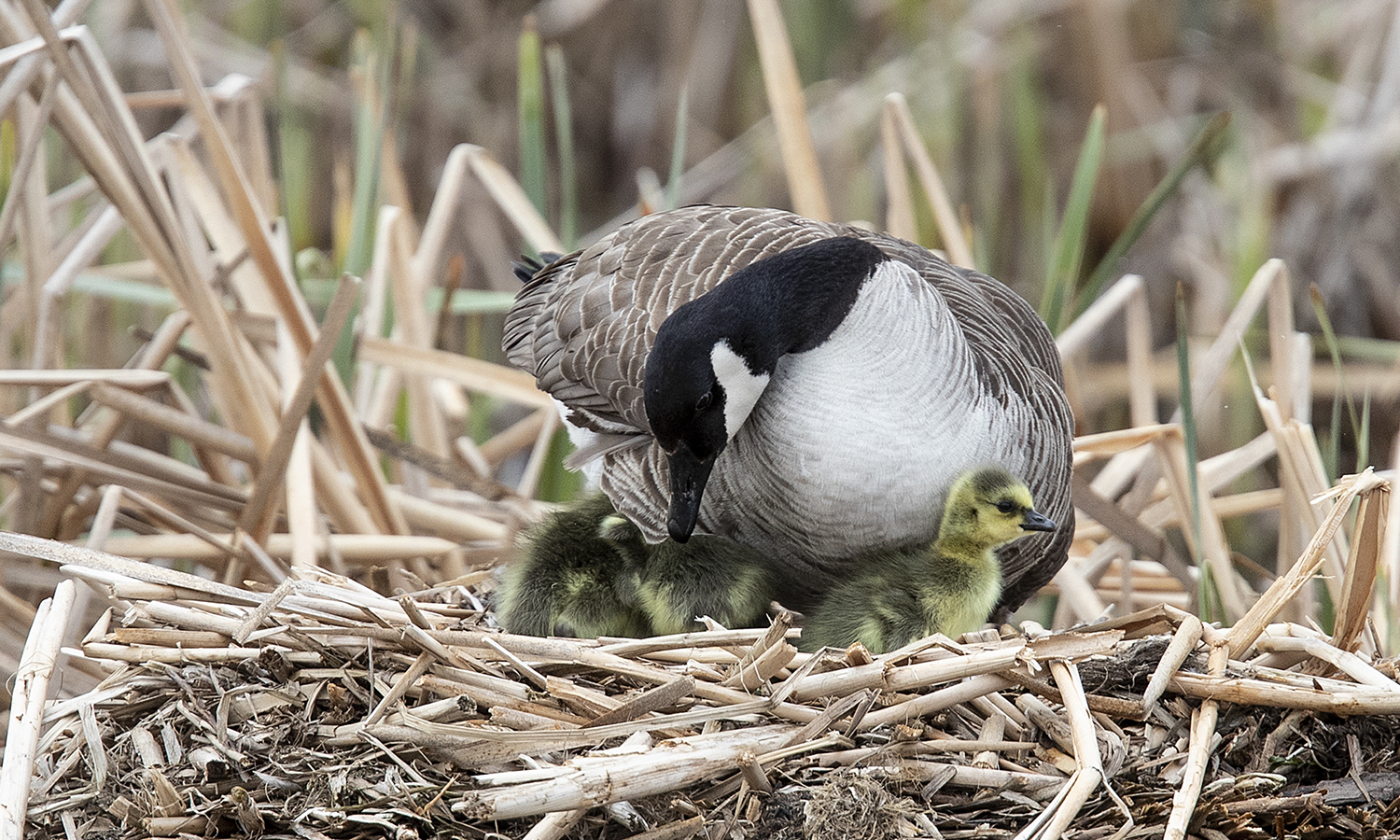 A female Canada Goose tends to her goslings atop her nest, located on a muskrat den.
A female Canada Goose tends to her goslings atop her nest, located on a muskrat den.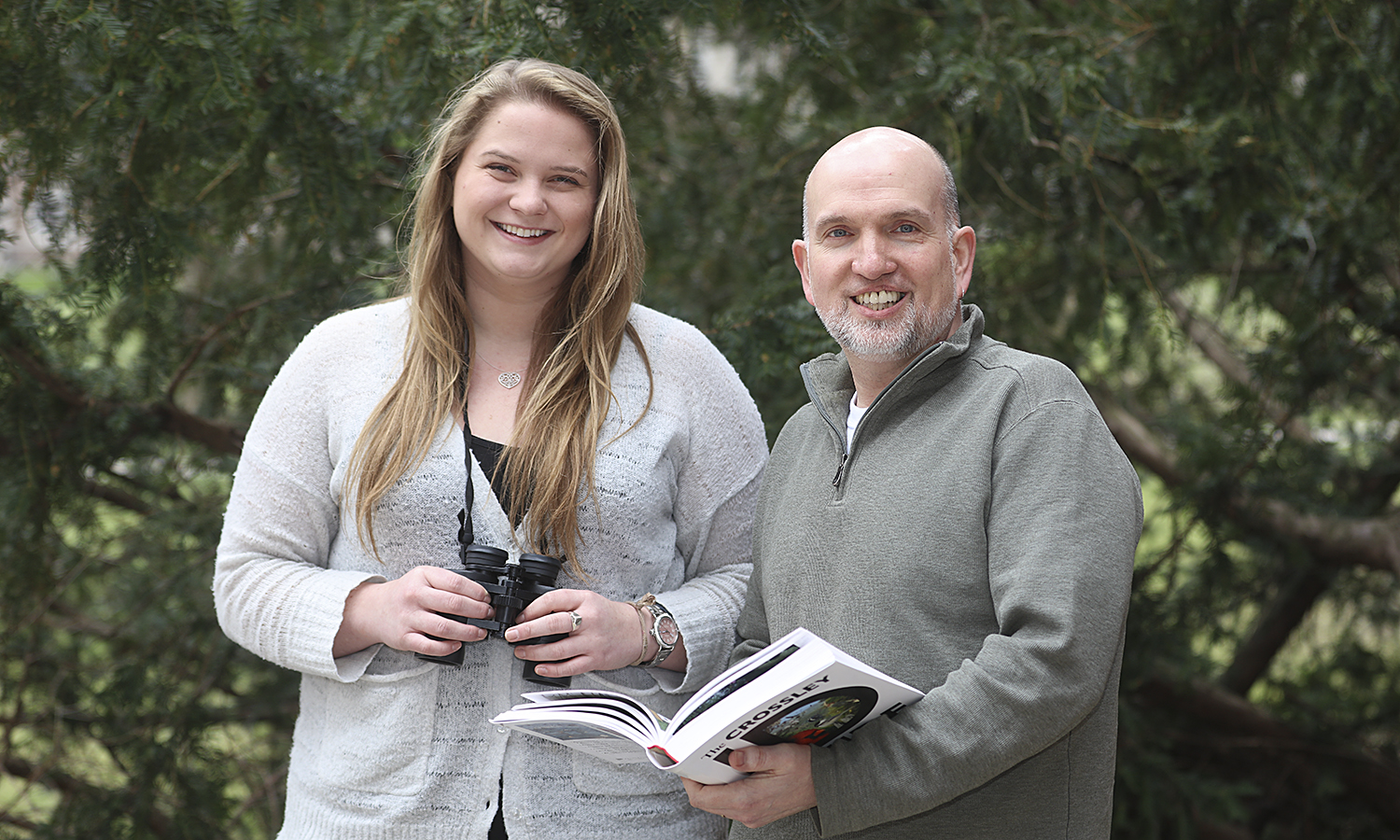 Deutschlander poses with Madison Sutton '17. In 2016, they earned the Jed Burtt Undergraduate Mentoring Grant from the Wilson Ornithological Society. Sutton is currently studying avian ecology in a Ph.D. program at Marquette University in Wisconsin.
Deutschlander poses with Madison Sutton '17. In 2016, they earned the Jed Burtt Undergraduate Mentoring Grant from the Wilson Ornithological Society. Sutton is currently studying avian ecology in a Ph.D. program at Marquette University in Wisconsin.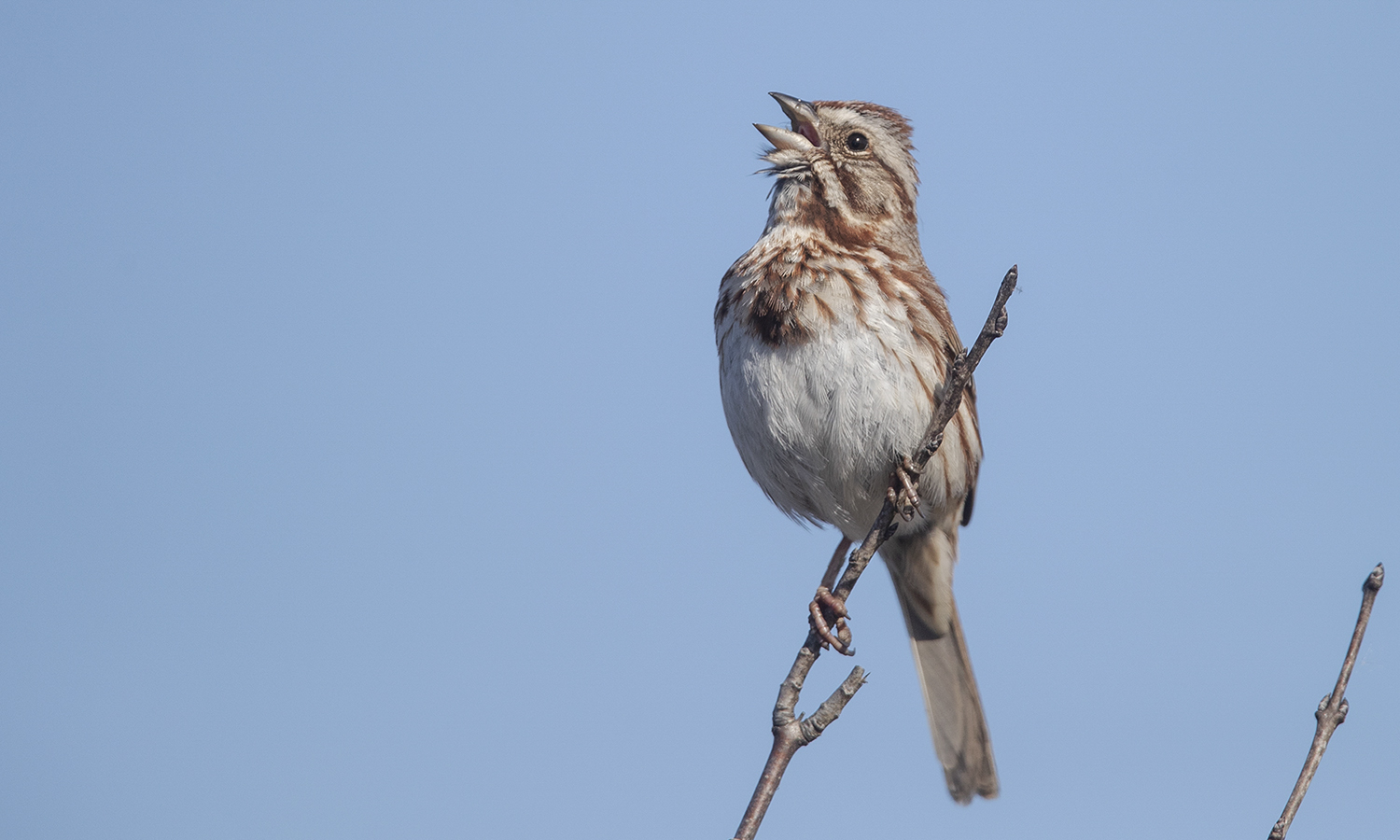 A Song Sparrow belts out a tune at the water's edge. These small birds are known for their loud voices. Students learn about the structure of bird songs, including syllables, trills and frequency sweeps. By paying attention to song, birders can identify species without even seeing them.
A Song Sparrow belts out a tune at the water's edge. These small birds are known for their loud voices. Students learn about the structure of bird songs, including syllables, trills and frequency sweeps. By paying attention to song, birders can identify species without even seeing them.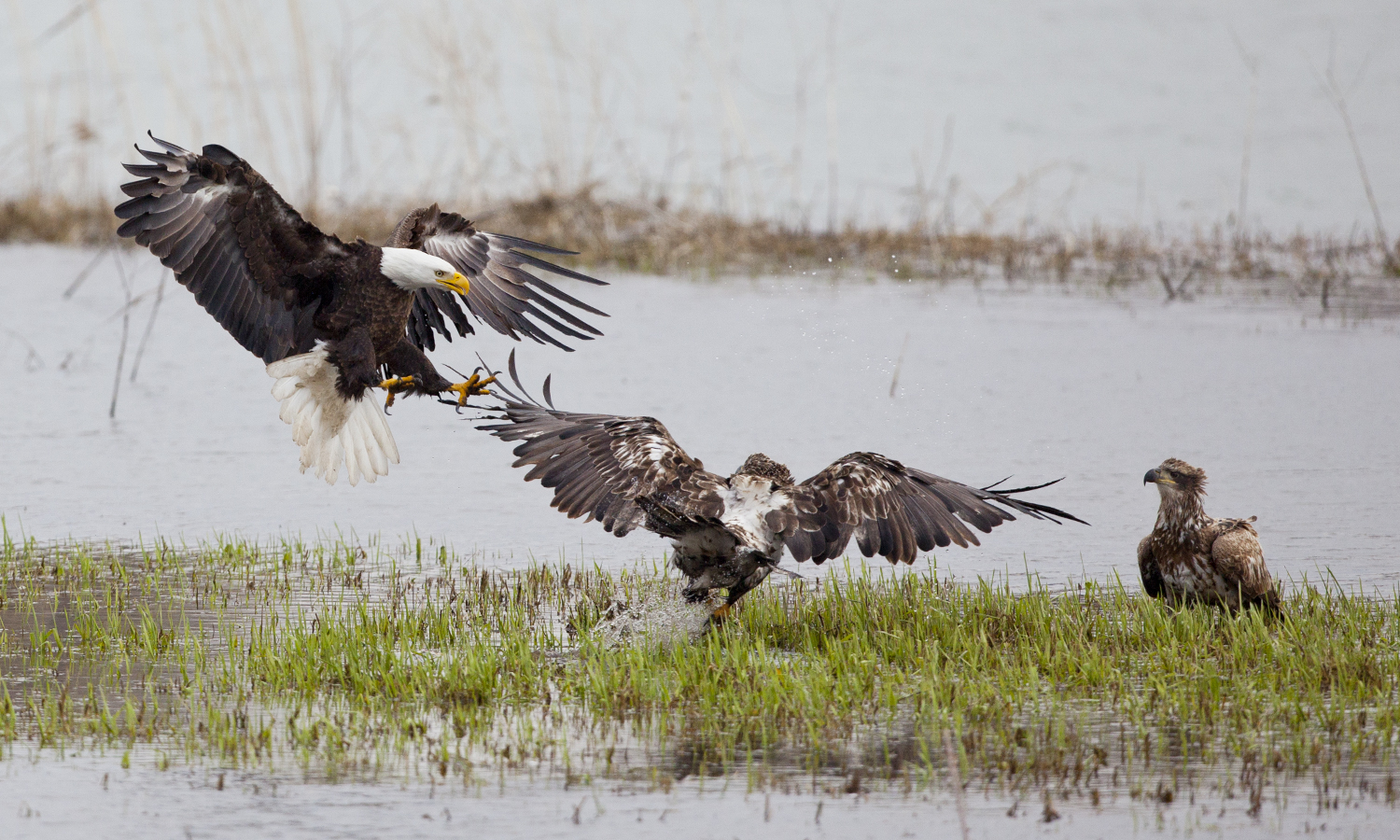 Adult and immature Bald Eagles squabble over a carp that was caught along the Cayuga-Seneca Canal. Once on the endangered species list, Bald Eagle populations have increased due environmental protection and efforts like those at the refuge.
Adult and immature Bald Eagles squabble over a carp that was caught along the Cayuga-Seneca Canal. Once on the endangered species list, Bald Eagle populations have increased due environmental protection and efforts like those at the refuge.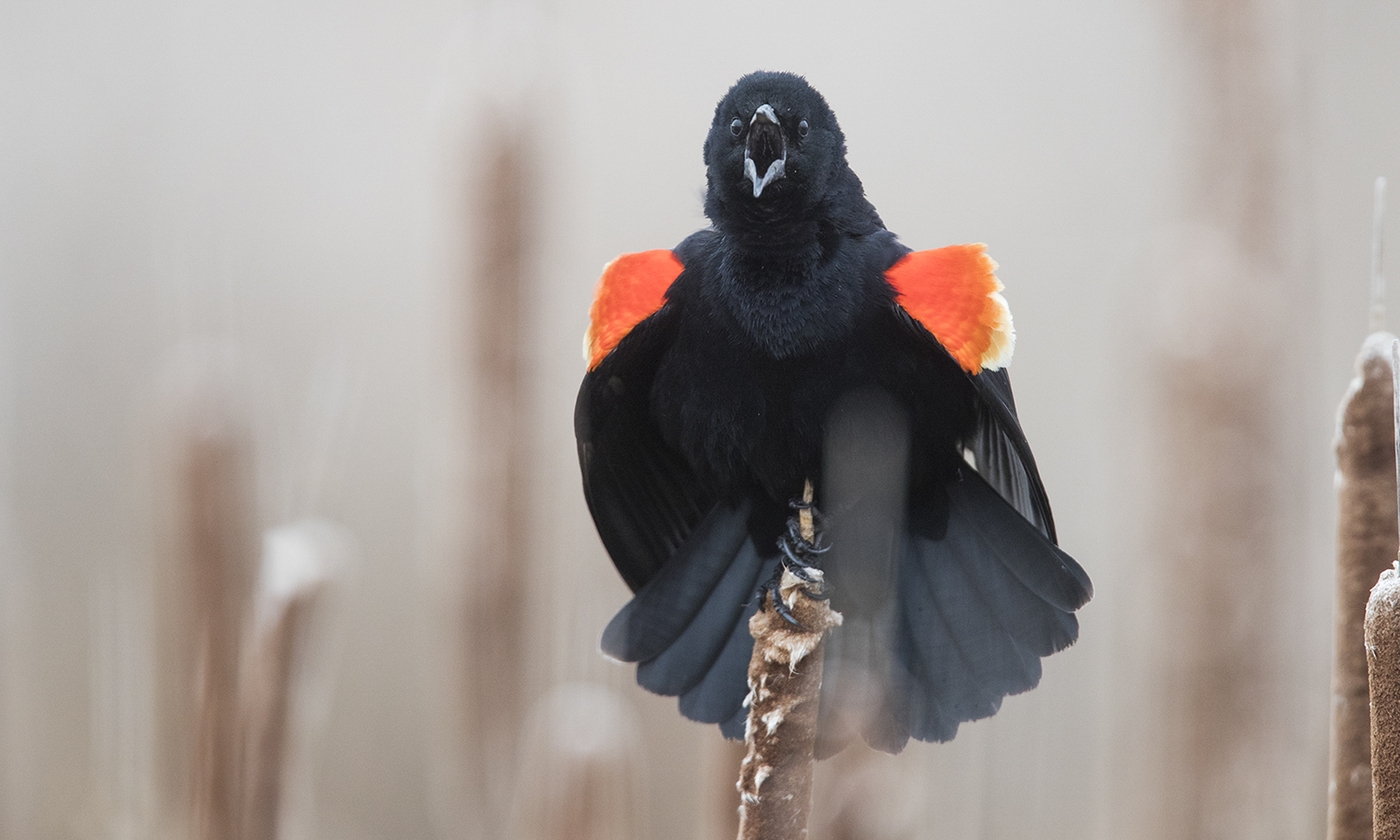 From atop a cattail, a Red-winged Blackbird defends the nesting territory he has claimed.
From atop a cattail, a Red-winged Blackbird defends the nesting territory he has claimed.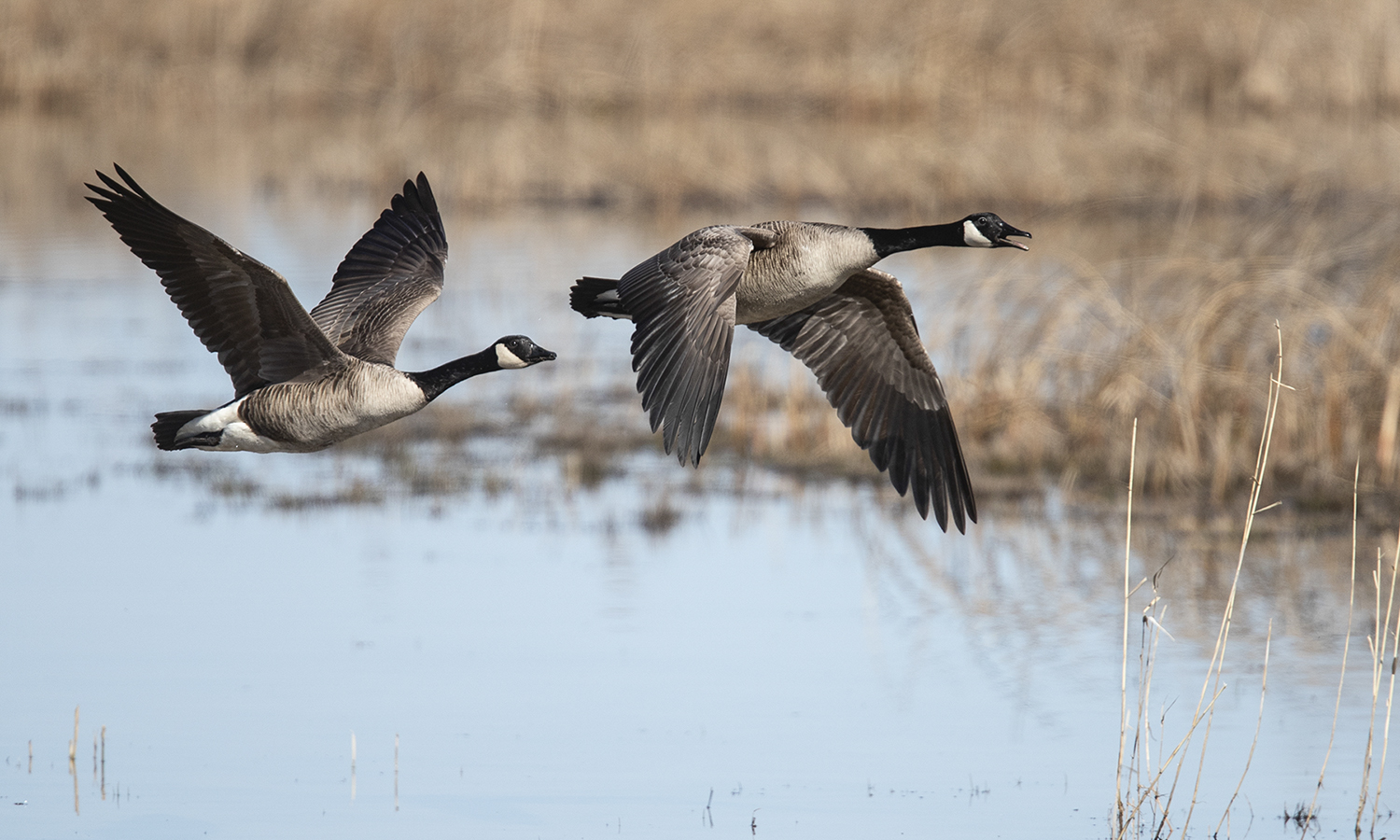 Canada Geese, which typically mate for life, are constantly on the wing as they look for nesting areas. Although geese and ducks are common at the refuge, many other species use this area during breeding or spring and fall migration. Well over 300 species of birds can be seen at this birding hotspot.
Canada Geese, which typically mate for life, are constantly on the wing as they look for nesting areas. Although geese and ducks are common at the refuge, many other species use this area during breeding or spring and fall migration. Well over 300 species of birds can be seen at this birding hotspot.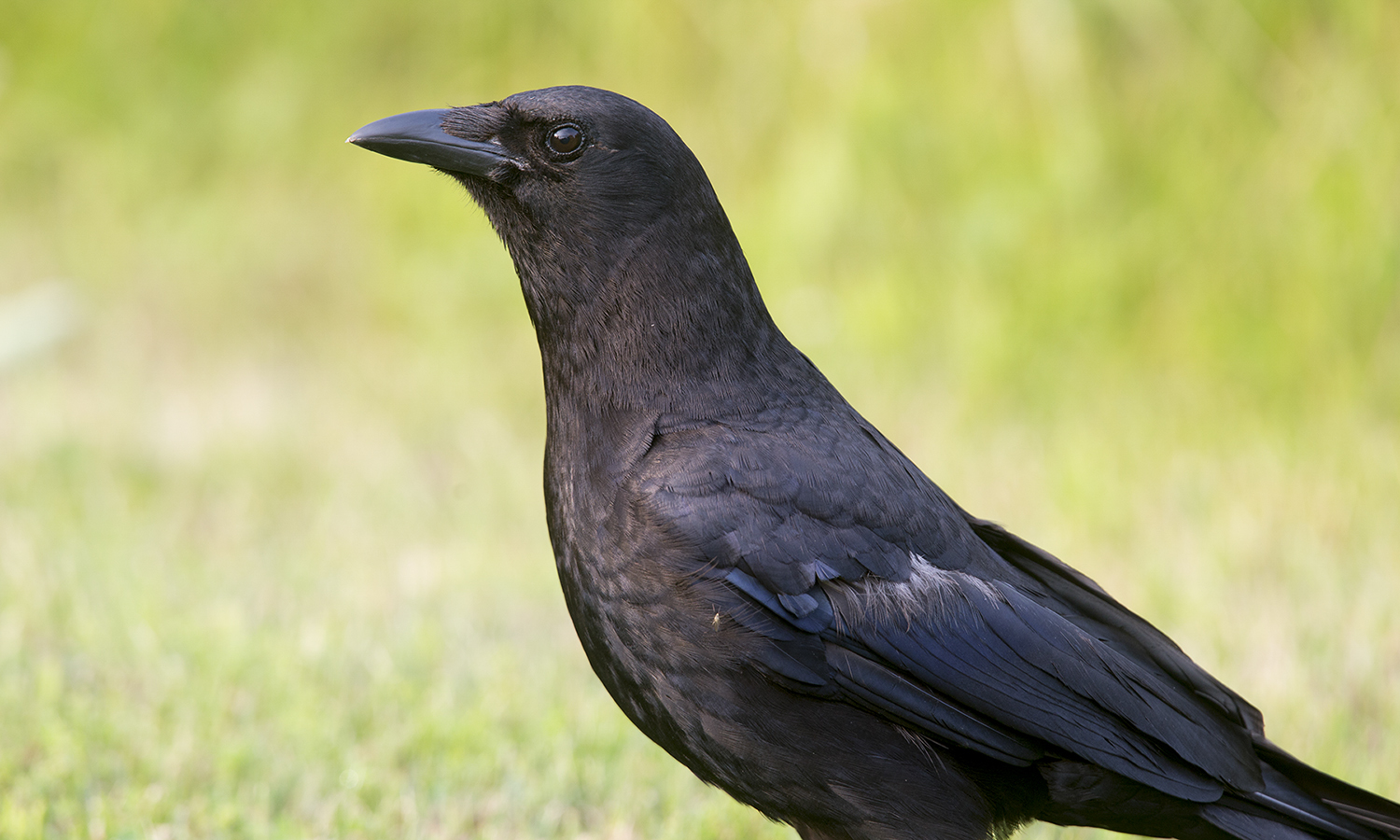 American Crows belong to a bird family called corvids (not covids), which includes jays, nutcrackers, ravens and magpies.
American Crows belong to a bird family called corvids (not covids), which includes jays, nutcrackers, ravens and magpies.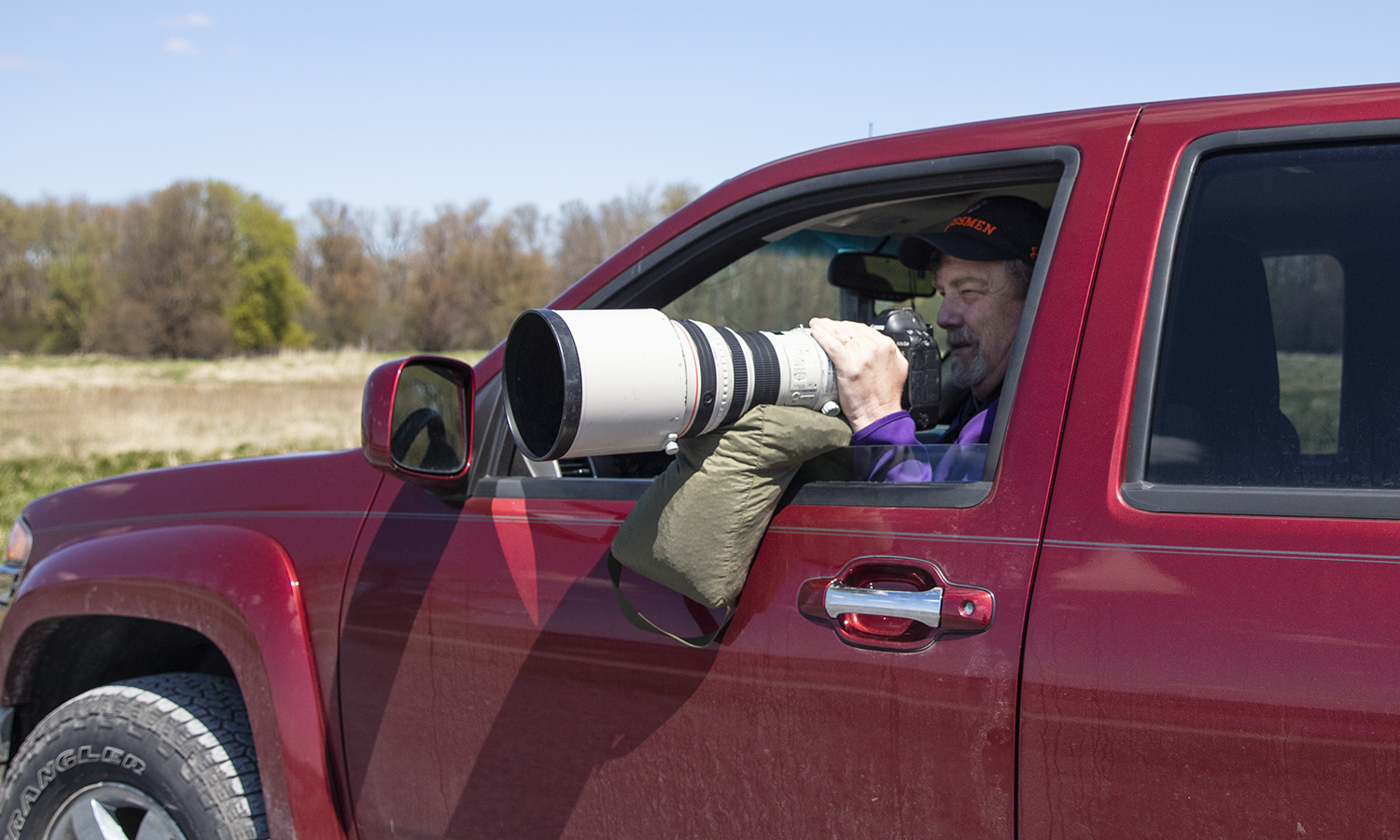 Chief Photographer Kevin Colton uses his truck as a blind to photograph birds at Montezuma. The photos are used as part of Deutschlander's virtual Maymester class.
Chief Photographer Kevin Colton uses his truck as a blind to photograph birds at Montezuma. The photos are used as part of Deutschlander's virtual Maymester class.
